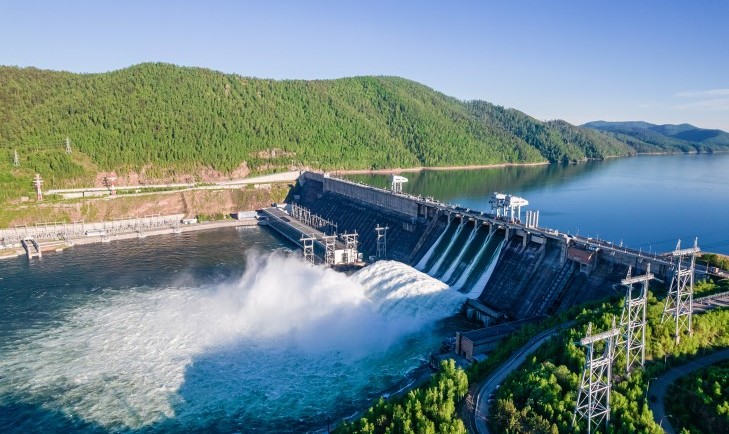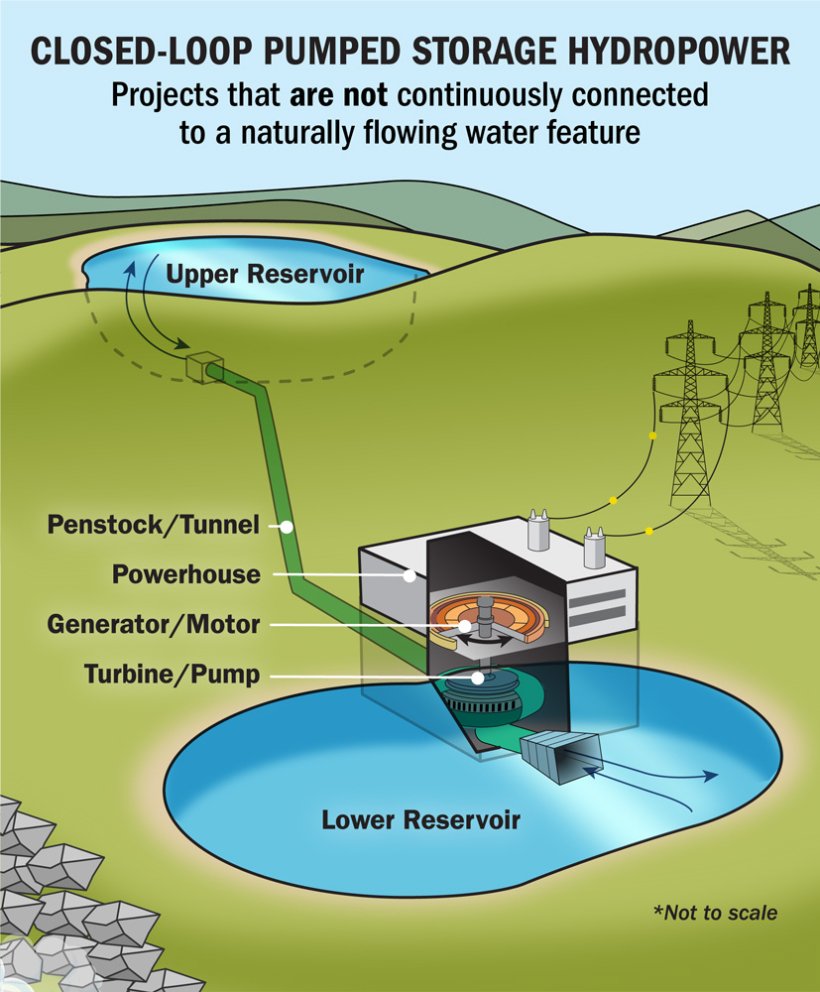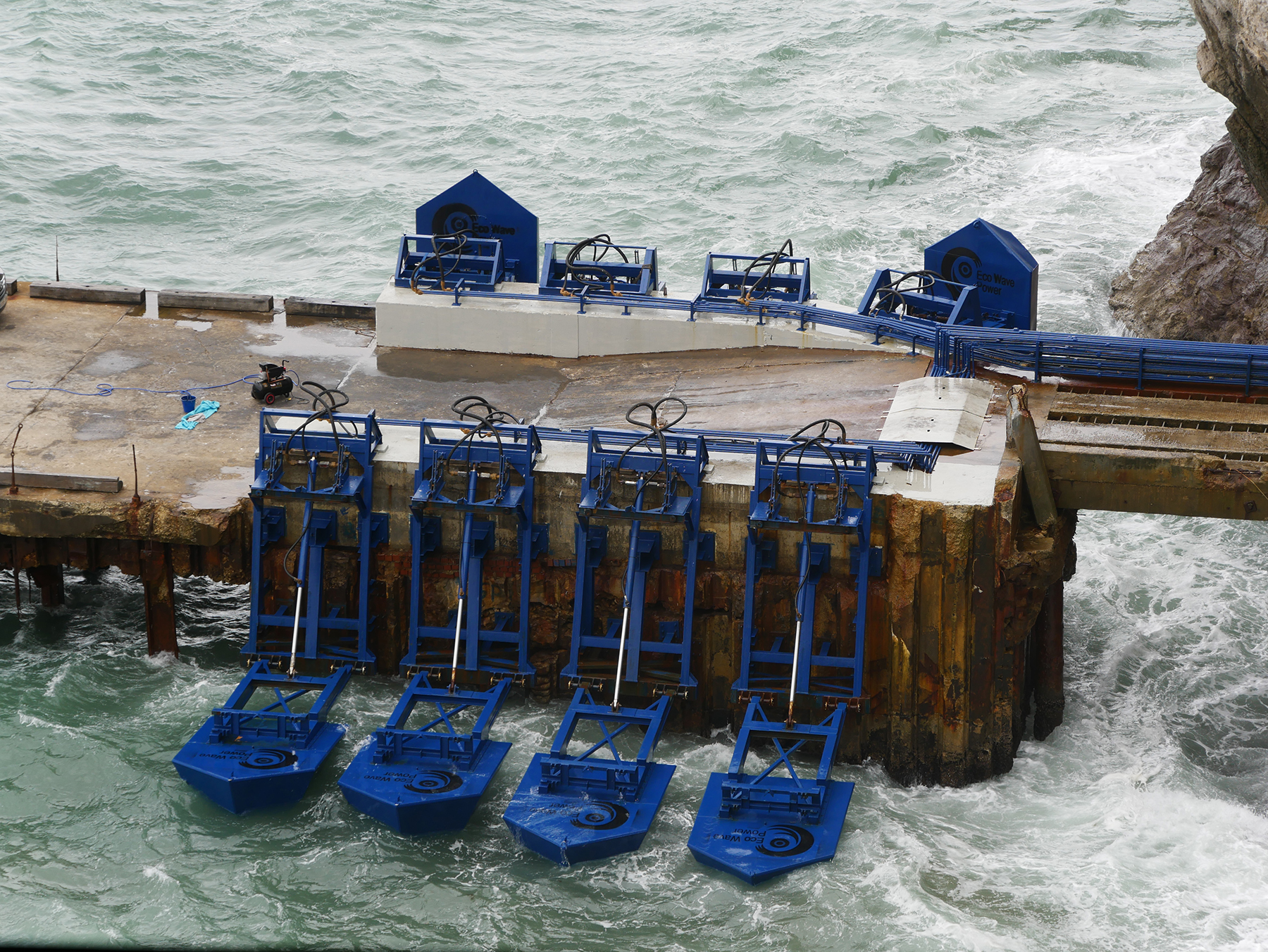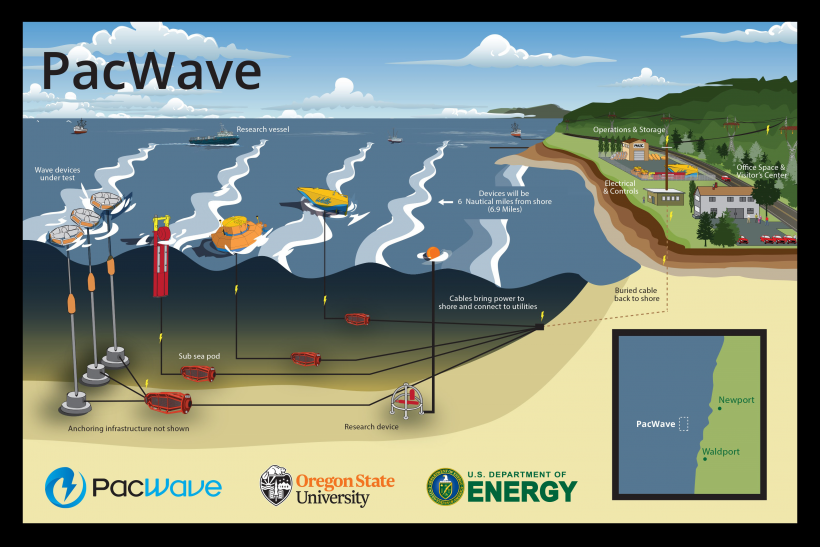08/22/24
Best of the West: Reimagining hydropower; new rules for geothermal; hiring wildland firefighters; Alzheimer’s research; solar cells; rare ocelot sighting

The Western Governors' Association keeps you updated on the latest news in the West. Here are the top stories for the week starting August 19, 2024. (Photos courtesy of Adobe Stock Images, Eco Wave Power, the U.S. Department of Energy, and Oregon State University)
August 24 is National Hydropower Day and this week we will be exploring the current uses and the future potential of hydropower across the West.
Hydropower is one of the country’s oldest forms of renewable energy, with a history that dates back to the 19th century. Its history is especially prevalent in the West, where most of the country’s hydropower capacity still lies. Today, states in the West generate more hydropower than anywhere else in the country, with Washington, California, and Oregon leading the nation in conventional hydropower capacity. Over the 2021-2022 water year, western states generated 61% of the country’s hydroelectricity.
Construction of the Hoover Dam between 1931 and 1937 put hydropower in the West on the map, with the dam employing 20,000 people during the Great Depression. Today, the Hoover Dam is still a major producer of clean energy for the region, producing as much as 4 billion kilowatt-hours of power every year, enough to serve about 1.3 million people across Nevada, California, and Arizona.
Elsewhere in Nevada, the clean energy developer r-Plus Energies is working on building one of the largest clean energy storage projects in the country using pumped storage hydropower (PSH). The technology works by pumping water up to a reservoir at a higher elevation while there is excess power on the grid, then allowing that water to flow back down into a lower reservoir to generate power when the grid is lacking it. 
Pumped storage hydro effectively works as a massive battery, allowing large amounts of energy to be stored and released as needed. Some form of the technology has been used in the United States for close to a century, and according to the Department of Energy, pumped storage hydro accounts for as much as 96% of all utility-scale energy storage in the country.
The project in Nevada would be the first large-scale PSH system built in decades. Its supporters argue that the 2,200-vertical-foot elevation gap between the upper and lower reservoirs will provide for efficient energy generation, while not interfering with any existing waterways.
In neighboring Arizona, the Salt River Project is looking to expand PSH in the Salt River Reservoir System. The new facility would provide between 1,000 and 2,000 megawatts of storage capacity, enough to serve 225,000 to 450,000 homes.
As Arizona continues to build out renewable energy sources like wind and solar, energy storage capacity is becoming increasingly important. Pumped storage hydro like the project proposed for the Salt River could present an important piece in the energy storage puzzle.
Marine and tidal energy is another promising industry that is looking to harness the power of water to generate reliable electricity. 
In California, a Swedish startup will soon be testing a wave-power project that will generate energy in the Port of Los Angeles. Eco Wave Power will deploy floating paddles mounted on piers and wharfs, which will apply pressure on a hydraulic system with each passing wave to generate electricity. The pilot program’s eight paddles will initially generate around 100 kilowatts per hour with the hope of pursuing commercial-scale power stations in the future.
Up and down the West Coast, marine energy projects are being explored as a reliable and powerful energy source. In Oregon, researchers from Oregon State University are operating two wave test centers to monitor and test wave energy technologies off the Oregon coast. The project, known as PacWave, will test a wide range of potential wave energy technologies, with the ability to test multiple arrays of devices at once.
technologies off the Oregon coast. The project, known as PacWave, will test a wide range of potential wave energy technologies, with the ability to test multiple arrays of devices at once.
In Alaska, Cook Inlet has garnered attention recently as a potential site for large-scale wave energy generation. Cook Inlet is home to some of the largest and most consistent tidal energy resources in the world. In addition, it flows right up to the Railbelt grid system, which provides power to 75% of the state’s population, including the cities of Fairbanks and Anchorage.
A recent analysis from the National Renewable Energy Laboratory (NREL) found that harnessing tidal energy in Cook Inlet could help decarbonize the Railbelt by 2035, while supporting other clean energy technologies like hydrogen. According to the study, tidal energy could reduce the Railbelt’s carbon emissions by 37% and provide as much as 20% of the region’s power by 2035.
Whatever the future holds for hydropower, a separate NREL analysis makes clear that we’re unlikely to see more river-blocking dams and wildlife-harming construction. As some dams start to come down in the West, the hydropower industry is turning toward smarter designs like fish-friendly turbines, or systems like closed-loop pumped hydro that don’t interfere with existing waterways at all.
For more on hydropower, check out the National Hydropower Association and join the National Hydropower Day celebration on August 24.
New rules for geothermal: the Colorado Energy and Carbon Management Coalition, formerly known as the Colorado Oil and Gas Conservation Commission, has adopted its first set of rules governing geothermal drilling in the state. The commission was previously responsible for regulating the state’s oil and gas industry before lawmakers expanded its scope to cover emerging industries like carbon capture and geothermal energy.
The new Deep Geothermal Operations rules outline permitting and procedures that resemble those used by the oil and gas industry, while giving local governments a say in the process and allowing the commission to approve or deny permits to protect health and safety.
Governor Jared Polis praised the Coalition’s rules, saying Colorado is “poised to leverage this clean, renewable energy source.” Governor Polis has been a strong and effective advocate for geothermal energy in Colorado, especially since the release of his WGA Chair initiative report, The Heat Beneath Our Feet, last year.
Other groups expressed satisfaction with the new set of rules and excitement at the prospect of geothermal development, including a coalition of local governments known as Colorado Communities for Climate Action and the trade group Geothermal Rising, which represents geothermal energy companies.
Hiring wildland firefighters: the West has already seen an active wildfire season, and the U.S. Forest Service is looking to address the wildfire threat by bringing on 250 new permanent seasonal wildland firefighters.
The new hires will work across forests and grasslands in Colorado, Kansas, Nebraska, South Dakota and Wyoming in positions such as airtanker technicians, engine operators, hand crew members, fire prevention specialists, and more.
Alzheimer’s research: researchers from Brigham Young University in Utah traveled to Alaska earlier this month to study Alzheimer’s disease in Pacific Islander, Native Hawaiian, Alaska Native and American Indian populations. Researchers say that the bulk of Alzheimer’s research has traditionally focused on a gene predominantly found in white populations, leaving major gaps in the research.
The research team says that Alzheimer’s could look much different across different populations and research like theirs is essential to understanding the disease.
Solar cells: the renewable energy manufacturing company Ebon Solar has announced its plans to open an 834,000 square-foot factory in Albuquerque, New Mexico, which will bring 900 jobs to the area.
The announcement comes on the heels of other renewable energy companies recently setting up shop in New Mexico, such as Maxeon Solar Technologies, Array Technologies, and Arcosa Wind Towers.
“We have succeeded in making New Mexico a global center for advanced energy manufacturing,” said Governor Michelle Lujan Grisham. “Ebon Solar joins other leading companies in embracing New Mexico’s commitment to renewable energy, its talented, dedicated workforce, and the opportunities we provide for job training and tuition-free college.”
Ocelot, ocelot, where are you now: researchers with the Phoenix Zoo recently caught sight of an ocelot on a game camera in Arizona. The sighting marks the first time an ocelot has been spotted in the Atascosa Highlands region of Arizona in more than 50 years.
The team noticed the footage during a routine outing to change the memory cards and batteries on one of nearly 50 game cameras they had placed around the Coronado National Forest near Arizona’s border with Mexico. Based on its unique spot pattern, the researchers were able to confirm that the animal was new to the state.
team noticed the footage during a routine outing to change the memory cards and batteries on one of nearly 50 game cameras they had placed around the Coronado National Forest near Arizona’s border with Mexico. Based on its unique spot pattern, the researchers were able to confirm that the animal was new to the state.
Ocelots are currently endangered in the United States after first receiving that designation in 1972. Some estimates put their population in the U.S. at less than 100.